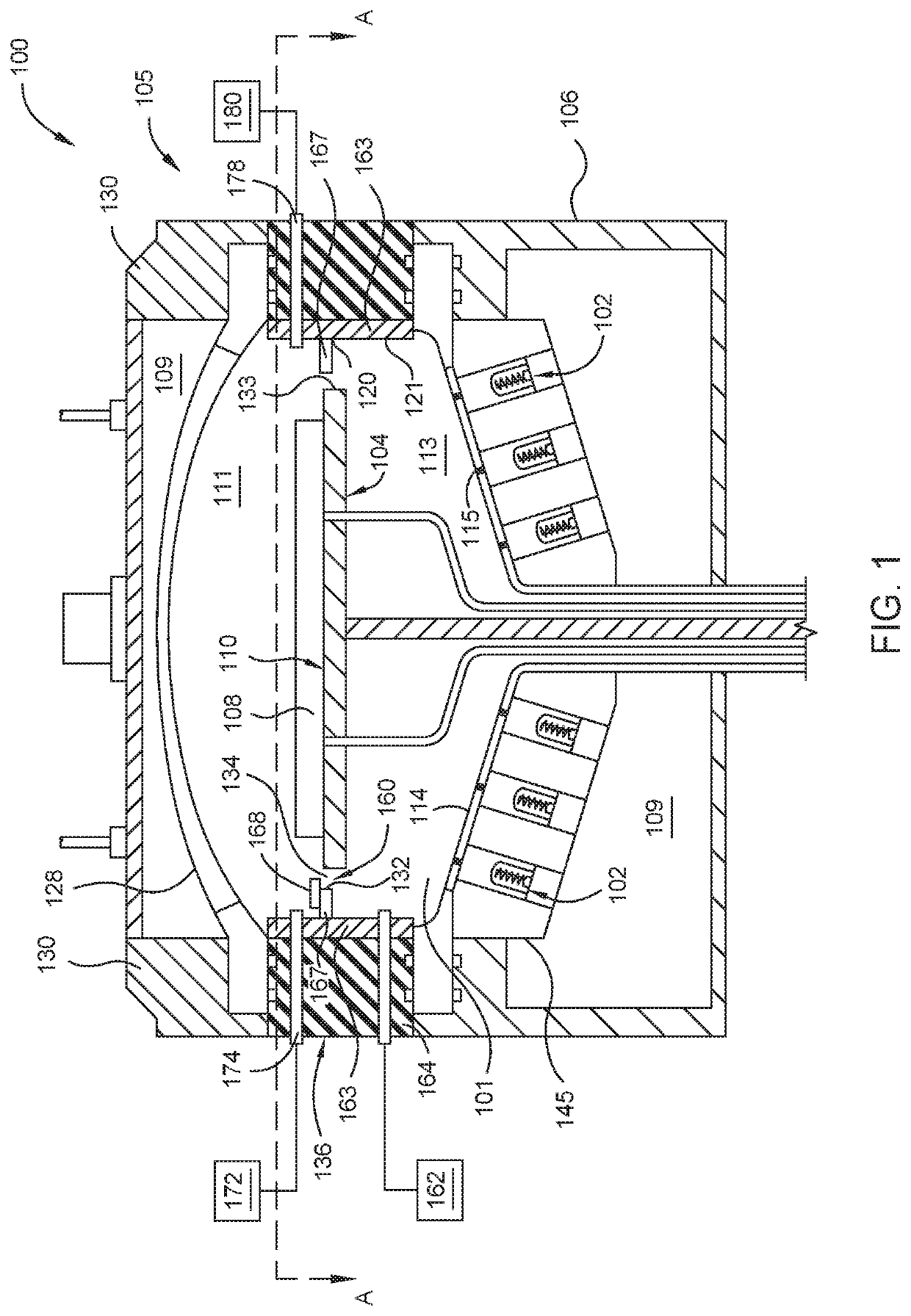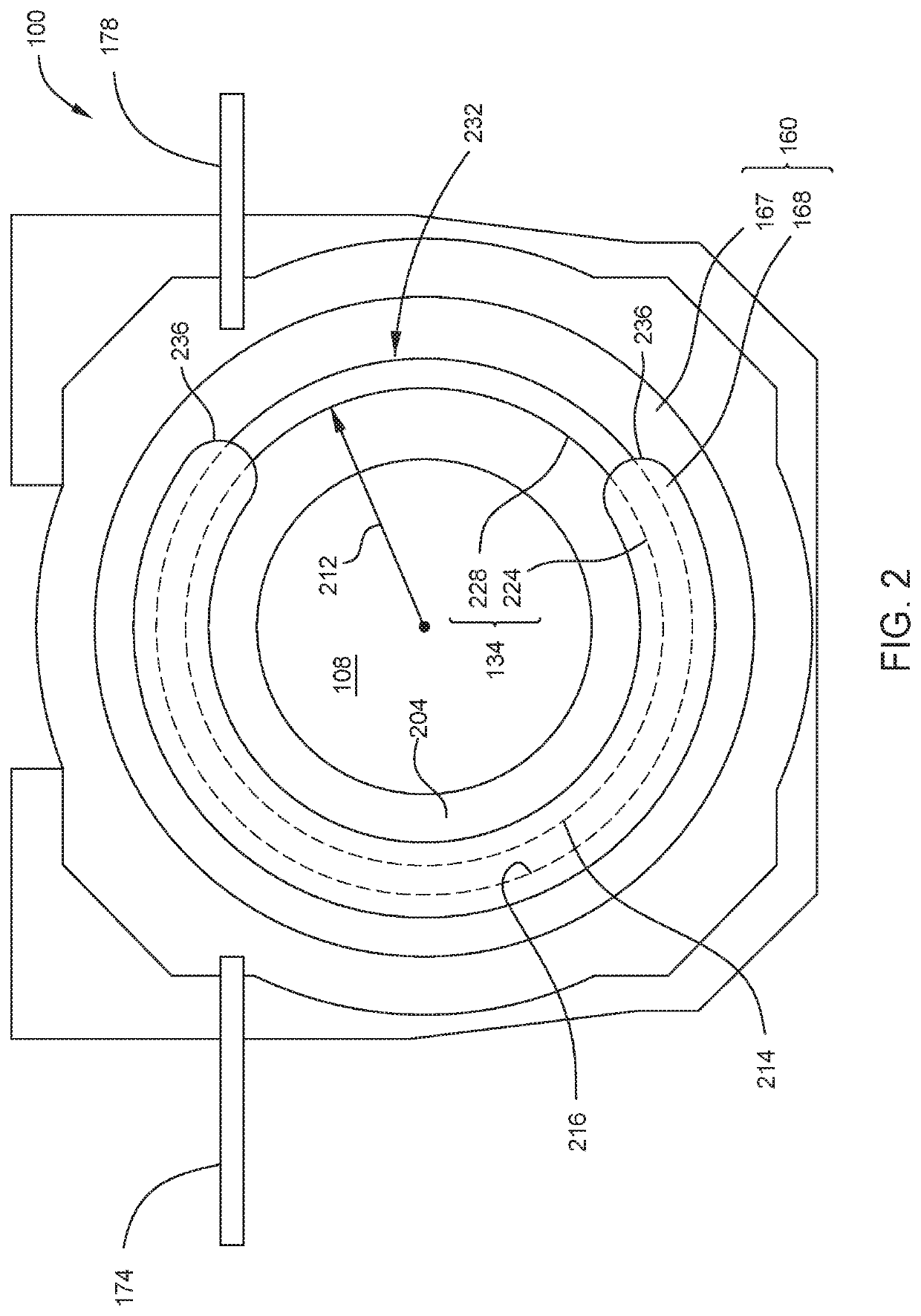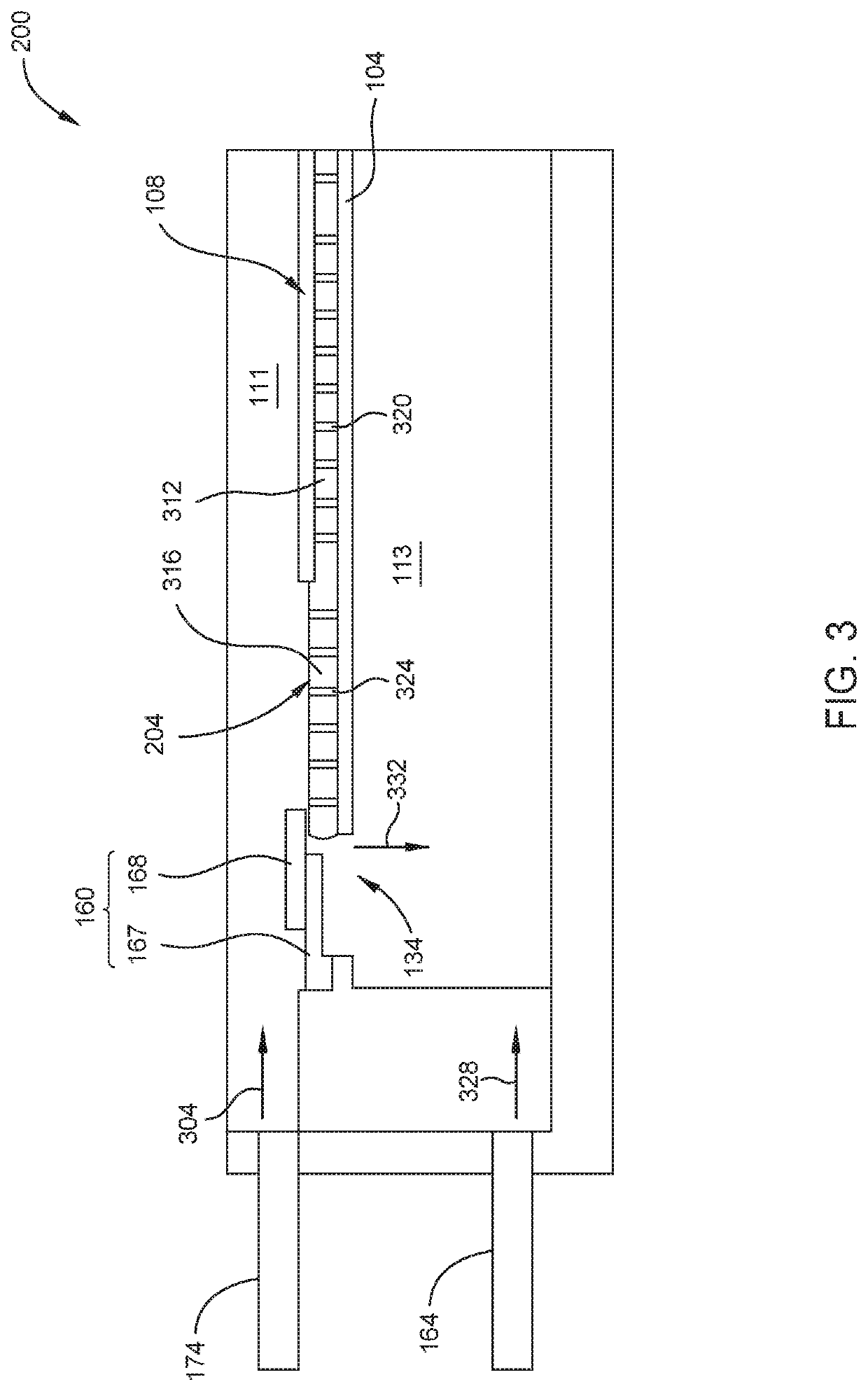Heat shield assembly for an epitaxy chamber
- Summary
- Abstract
- Description
- Claims
- Application Information
AI Technical Summary
Benefits of technology
Problems solved by technology
Method used
Image
Examples
Embodiment Construction
[0018]Disclosed herein is a heat shield assembly for a processing chamber. Examples of the processing chamber include a chamber body having sidewalls, a bottom and a lid defining an interior volume of the chamber body. Disposed within the internal volume is a substrate support and the heat shield assembly. The heat shield assembly includes a heat shield member and an annular preheat member. An annular opening is formed between the substrate support and the annular preheat member.
[0019]A portion of the annular opening is not overlapped by the heat shield member. The position of the non-overlapped portion of the annular opening with respect to a gas inlet and a gas outlet influences a coating of deposition material on surfaces within the internal volume. More specifically, positioning the heat shield member distally from the gas outlet reduces the coating of deposition material on the substrate support, on the upper dome surfaces and lower dome surfaces of the processing chamber. Beca...
PUM
| Property | Measurement | Unit |
|---|---|---|
| Fraction | aaaaa | aaaaa |
| Thickness | aaaaa | aaaaa |
| Radius | aaaaa | aaaaa |
Abstract
Description
Claims
Application Information
 Login to View More
Login to View More - R&D
- Intellectual Property
- Life Sciences
- Materials
- Tech Scout
- Unparalleled Data Quality
- Higher Quality Content
- 60% Fewer Hallucinations
Browse by: Latest US Patents, China's latest patents, Technical Efficacy Thesaurus, Application Domain, Technology Topic, Popular Technical Reports.
© 2025 PatSnap. All rights reserved.Legal|Privacy policy|Modern Slavery Act Transparency Statement|Sitemap|About US| Contact US: help@patsnap.com



